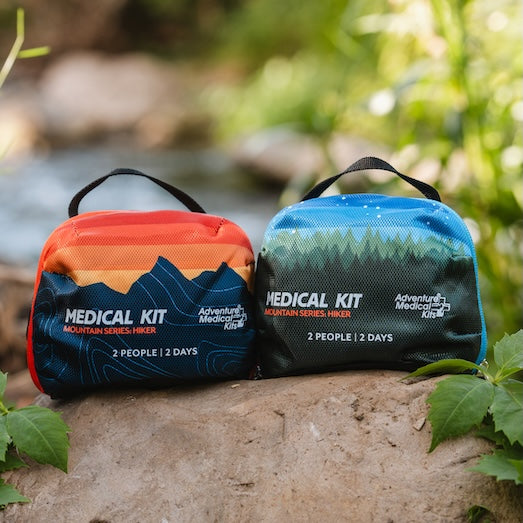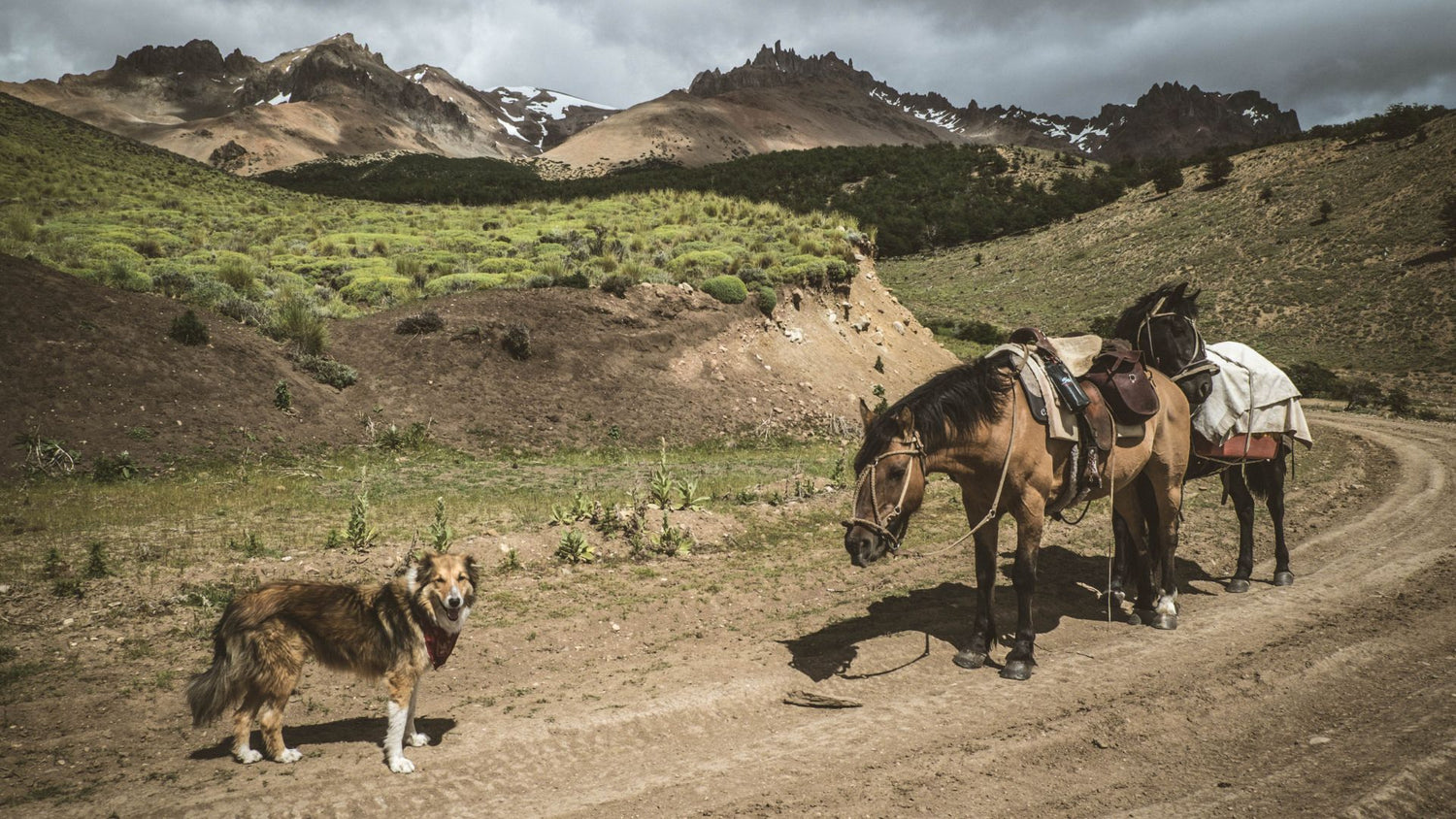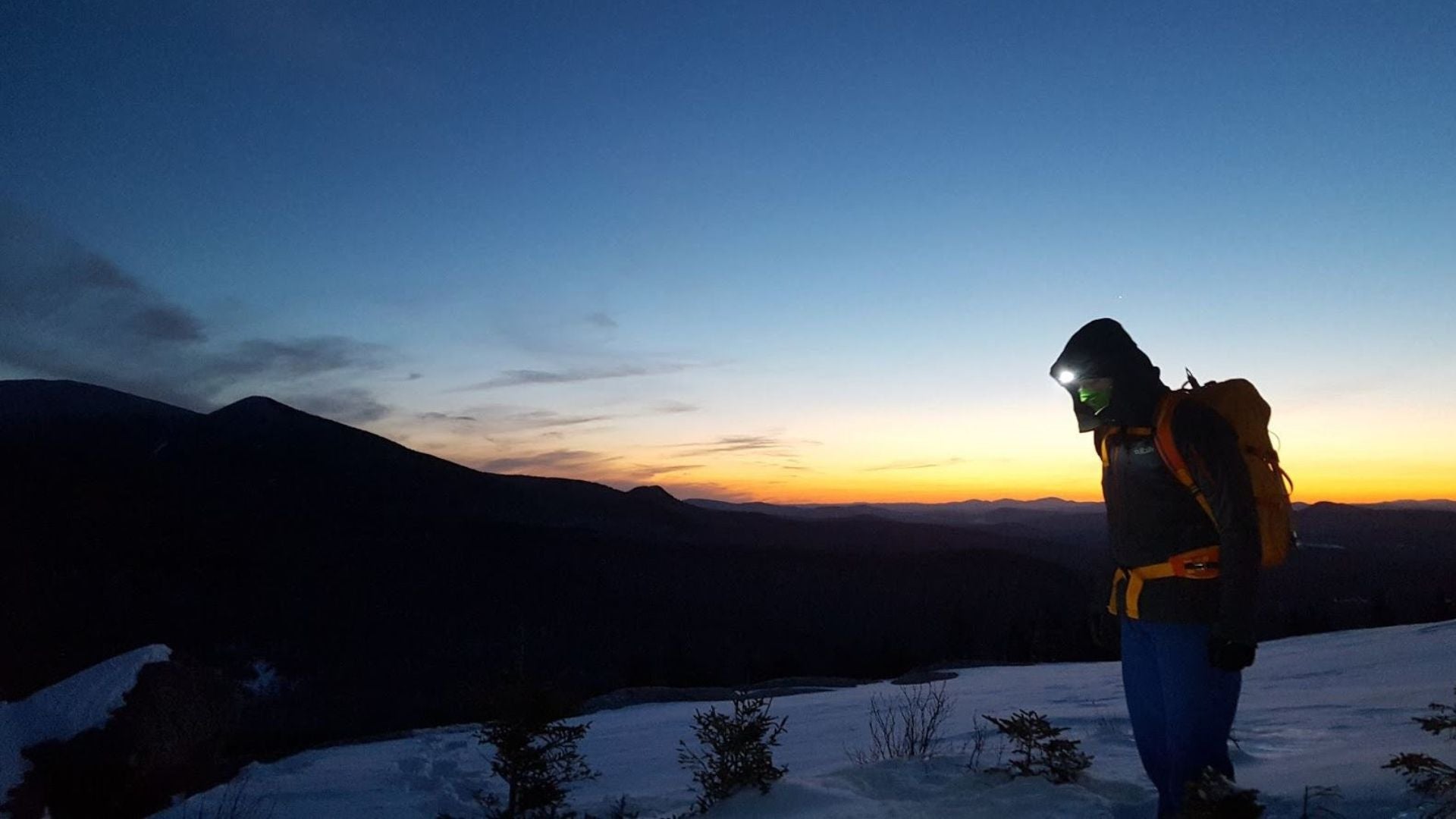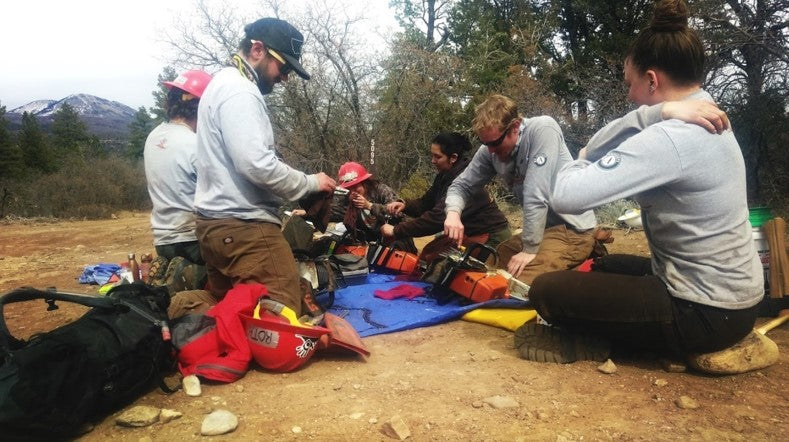Adventurer Stevie Anna traveled over 1,150 miles with her adventure dog Darcie and two horses on a solo horse pilgrimage across Patagonia, a journey that took about three months. Two years of careful planning – including training in human and dog first aid – helped her stay safe and successfully accomplish her goal. We asked her to share about the expedition and how she prepared herself and her four-legged companions – here’s what she said!
Exploring the Last Wild Frontier
I moved to Patagonia, Argentina, nearly three years ago where I fell in love with the gaucho culture and began working as a horse guide with Carol Jones, whose grandfather ran with Butch Cassidy and The Sundance Kid for some years here in Patagonia. After having experienced the slice of heaven that lies along the Andes Mountains, I decided to learn more of my new home by crossing it by horseback.
In a land that refuses to be explored by any other means, traditional horse-packing across Patagonia provides a traveler the chance to step back in time while exploring the culture and rugged, unforgiving landscape of one of the last untouched places on earth. This past November, I embarked on a solo expedition covering over 1,150 miles of Patagonia with my two horses Bandido & Sundance and my adventure pup, Darcie.
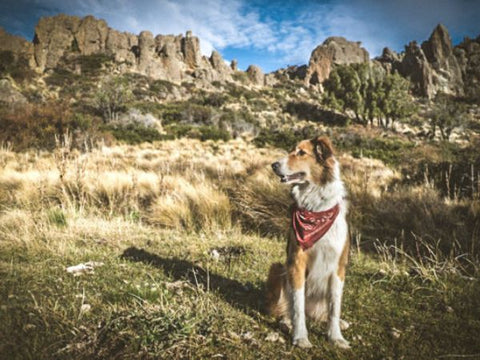
My mission for this horse pilgrimage was to document the culture of this last wild frontier solo with my fur companions. I named the project Patagone. The native word here in Patagonia for foot, paw, or hoof is pata, and since we’d be traveling by all three, “Patagone” suited the journey perfectly.
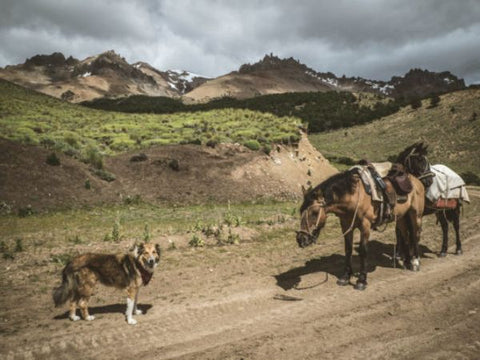
A Journey 2 Years in the Making
One typically thinks of the journey being the most difficult part of an expedition, however the preparation process proved to be just as much as a challenge as being on the trail itself.
I began preparing for the 1,000 mile journey nearly two years in advance. My list of things to learn ranged anywhere from how to shoe a horse to a crash course in dog first aid for my dog Darcie, as well as classes from a local doctor on first aid for myself.
Trail Safety: Choosing the Right Gear & Training with Experts
Through the years we’ve gone through a lot of gear and even a few makeshift solutions of our own, but there’s just some things that the trail can’t teach you. For that I turned to Andrea, the local veterinarian here in Patagonia who has been so gracious as to train me on emergency care for dogs over the past few months. We utilized all of the resources that Adventure® Medical Kits had, such as their Canine Field Medicine dog first aid guide, as well as an Adventure Dog Medical Kit.
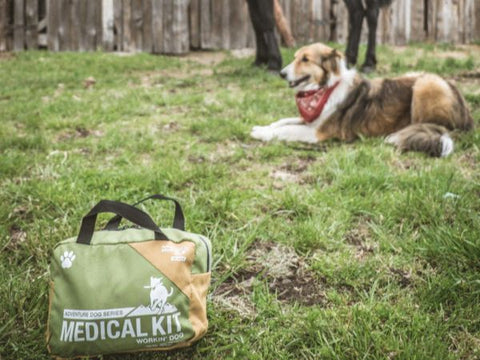
Together, Andrea and I came up with practical trail solutions that are easy to find in this part of the world and are often multipurpose for both Darcie and my two horses (for example: gauze, gloves, bandages, etc.). In addition to the Adventure® Dog Kit, the Canine Field Medicine guide also accompanied me on my journey, which proved an excellent resource guide and go-to manual for Darcie’s medical needs on the trail.
For myself, I found the Mountain Series Comprehensive (now known as the Mountain Series Guide) medical kit to be perfect for weight and usability for my ride. Martin Buchuk, a local doctor here in Bariloche, Patagonia, helped with a crash course in outdoor first aid and running through how to use all of the supplies in my medical kit properly. Key points that we covered were dislocated shoulders from a bad fall from a horse, dehydration, deep wounds, and major injuries such as head traumas.
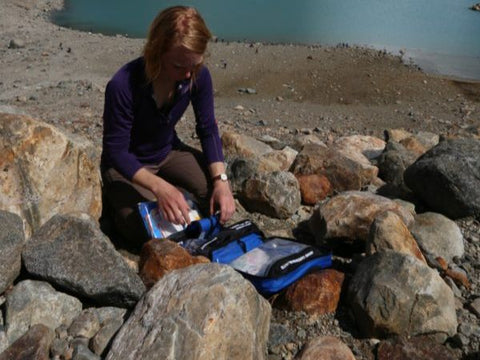
While having the proper equipment can save you and your dog’s life, it’s important to have experience understanding how to use the materials and medications properly for both you and your pet. Prevention is always key to a safe journey, but even at that, accidents can happen, so knowing your environment beforehand; taking first aid, CPR, or a wilderness first aid course; and knowing your medical supplies is crucial to staying safe in the backcountry.
Dog First Aid Packing List
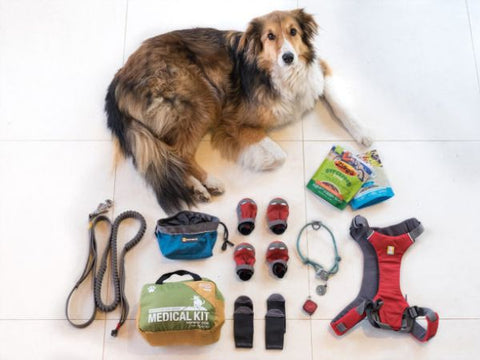
For Darcie, I started with Adventure® Medical Kits Workin’ Dog first aid kit as a base and then customized it specifically for the expedition. The end medical kit included:
- Nitrile Gloves
- Splinter Picker: Great for removing embedded grasses that get lodged in-between paws as well as ticks.
- EMT Shears: Good for cutting off dead skin from wounds as well as the hair around it. Cut hair around wound without lifting hair up. Should be cleared away without falling onto the wound naturally.
- Cotton: Good for cleaning wounds as well as ears, etc.
- Iodine: My vet suggested mixing iodine and the saline solution into one mix for cleaning out wounds.
- Hydrogen Peroxide: Good for cleaning wounds and can be used to induce vomiting in case of poison consumption: 1 tbs per 10-15 lbs of dog. No more than 2 doses.
- QuikClot® Advanced Clotting Gauze: Excellent for any deep wounds.
- Hemostat Forceps: A must have for any major inquiry which requires you to pinch an artery, etc. The rule of thumb for heavy bleeding is 1. Direct pressure. 2. Elevation. 3. Pressing on a pressure point.
- Instant Cold Pack
- Irrigation Syringe
- Saline Solution: It’s good to get a squeeze bottle of this with the top used for contact lenses so that you can apply a pressure when using this to clean out dirt from wounds.
- Disposable Skin Stapler and Staple remover
- Superglue: Can be used to close clean cuts.
- Razor Blade: Used for clearing hair from a wounded area on the skin.
- Antibiotic Ointment
- Antiseptic Wipes
- Alcohol Wipes
- Antibiotics
- Antihistamine: In case of any allergic reactions such as a bee sting.
- Anti-inflammatory: I carried this primarily in case of a horse kick to the head to prevent any major brain swelling, but it is good to carry in case of any emergency in the backcountry.
- Gauze Bandages
- Sterile Dressing
- Thermometer
While you can buy or even make many items that will keep your adventure pup safe outdoors, one should note that a lot of safety comes with the trust and bond you build with your dog, mutual respect, and some intense time spent in training. Commands can be one of the biggest lifesaver and preventative measures you can take in insuring your pet’s safety. Training your dog to be off-leash is crucial so that he/she knows how to behave. NOT CHASING WILDLIFE, ETC.
My First Aid Packing List

We ended up altering the Mountain Series Comprehensive kit for my specific journey, adding some medications and materials that would apply for the season and conditions here in Patagonia during my ride. My final kit included:
- Bandages & Dressing
- Cotton: Good for cleaning wounds as well as protecting your ears against the brutal, cold winds of Patagonia.
- Gloves
- Trauma Pads
- GlacierGel®
- Moleskin: These saved me on those especially long days in the saddle! They’re a must for any rider or hiker for preventing blisters or sores.
- Oil of Clove
- Temporary Cavity Filling Mixture: Excellent if you know you’ll be far out in the backcountry and away from the dentist office. It’s easy to apply and will save you from a world of pain.
- EMT Shears
- Splinter Picker
- Thermometer
- Medications: Acetaminophen, Antacid, After Bite® Wipe, Antihistamine, Injection for Anaphylactic Shock in case of bee stings, antibiotics, pain killers in case of major accident, Diamode, Diotame, Glucose Paste, Ibuprofen, and Oral Reydration Salts which are mandatory for any long journey where you’re at risk for dehydration.
- Zinc Oxide
- Scalpel Blade
- Povidone Iodine
- Syringes
- Tincture of Benzoin Topical Adhesive
- Triple Antibiotic Treatment
Journey’s End

After 85 days on the trail, the animals and I reached our final destination of El Chalten, Patagonia. We traveled over 1,150 miles over nearly three months to get to that point. One might call that a successful expedition in itself, but after seeing the potential dangers that had lain before us, hearing the history of other riders loosing horses to puma, colic, etc. or arriving to their endpoint with skinny animals, I pride myself more on the fact that me and my animal team completed the journey healthy, fat, and happy.
All the prior training and two years of preparation allowed us to reach our end goal together and without so much as a scratch. The few issues that we did have on the trail were minor, and the medical kits served them perfectly.

Patagone: A Story of People
I knew that the people of Patagonia were a kind and caring people, but during the ride my eyes were completely opened to the generosity of the people across the entire country. They opened their door to us, fed me and Darcie dinner (Patagonian lamb!), and always gave me plenty of pasture and roaming area for the horses. We actually ended our journey a bit fatter than when we had initially departed.

People always ask me what the best part of the journey was, and without hesitation I answer that it was the people, the people that helped me prepare and supported me during the journey such as friends, family, companies, and even strangers. It was the people that helped me during the ride, opening their door to me and my animals, and all the people who were there sending me kind messages of support not only during my ride, but even now after it’s been completed.
